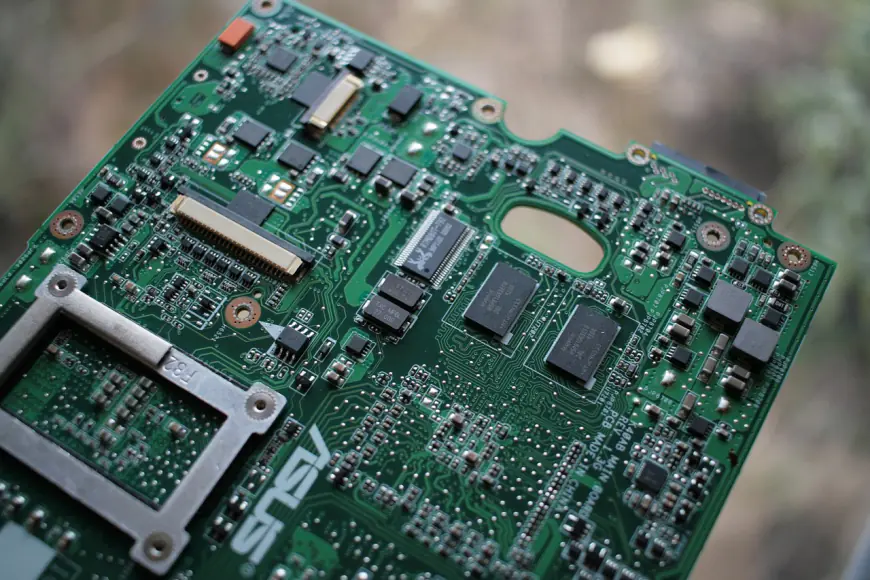Chinese tech firms scramble to stockpile HBM chips amid US restriction fears
Chinese tech firms are rushing to stockpile Samsung’s high bandwidth memory (HBM) chips that power AI systems before they are affected by US restrictions. The US reportedly seeks to sanction the sale and distribution of the chips in China on security reasons as geopolitical tensions continue. A Bloomberg’s July 31 report indicated that the US […]

Chinese tech firms are rushing to stockpile Samsung’s high bandwidth memory (HBM) chips that power AI systems before they are affected by US restrictions. The US reportedly seeks to sanction the sale and distribution of the chips in China on security reasons as geopolitical tensions continue.
A Bloomberg’s July 31 report indicated that the US may use its Foreign Direct Product Rule (FDPR) to stop China from buying chips produced by South Korea’s Samsung and SK Hynix. A Reuters report also said a new round of chip export controls will be announced by the end of this month.
Tech giants like Huawei and Baidu are reportedly beefing up their stocks as they anticipate the potential ban by the US as the geo-political tensions with China intensify. HBM chips are used as AI accelerators.
China recorded a strong demand for HDM chips
According to Reuters, China accounted for 30% of Samsung’s HBM chip revenues during the first six months of 2024. Tech giants like Baidu and Huawei significantly contributed to this demand and new startups in China according to three unnamed sources cited by the Reuters report.
The report also indicated that most Chinese tech firms sought especially the HBM2E chip which is one generation behind HBM3, and two generations behind HBM3E. China is also planning to locally produce the HBM2, which is the most mature but least advanced model.
In a report, France-based research institute Yole Group said that the global HMB market revenue may jump to $14 billion in 2024, compared to $2.7 billion achieved in 2022. The figure is also expected to continue rising to $37.7 billion in 2029 which represents a compound annual growth rate of 38% from 2023 to 2029.
The research firm also said the percentage of HBM to overall DRAM market will increase to 19% this year from 3% in 2022. But analysts at Fangzheng Securities projected the global HBM demand to reach only $9.14 billion this year with Nvidia taking up 58% of all HBM chips, while Google, AMD, and Chinese firms take up 15%, 14%, and 7% respectively.
DigiTimes of Taiwan recently reported that Chinese firms’ stockpiling of Samsung’s HBM chips has spurred China’s overall chip imports in the first seven months of this year.
However, Guancha.cn columnist, Li Yali, wrote that the increase in chip imports into China in the first seven months of the year was probably pushed by a rebound for Chinese consumer electronic products as opposed to stockpiling HBM chips.
Chinese tech firms want to ramp up domestic production
Bloomberg reported in June that chief of US Commerce Department’s Bureau of Industry and Security (BIS), Alan Estevez, would visit Japan and the Netherlands to encourage their governments to stop ASML and Tokyo Electron from selling HBM chip-making equipment to China.
Now, China’s ChangXin Memory Technologies (CXMT) has reportedly started production of HBM2 chips. Although the company has not publicly revealed the progress of the HBM chip production, a May 2024 report said that CXMT had developed sample chips in partnership with Tongfu Microelectronics and showed the products to some clients.
Commentators in China have opined that Tongfu Microelectronics, JCET Group, and Huatian Technology have the potential to produce the HBM chips. They added that while Tongfu still needs more time to prepare for mass production, it is a capable and strong player in the industry.
A March evaluation report from the Ministry of Ecology and Environment for Nantong Tongfu’s HBM chip production facility revealed that the 250-employee facility can produce 36,000 units of 80-milimeter-long HNM chips a year.
Nantong Tongfu is a fully-owned subsidiary of Tongfu Microelectronics. In December 2022, the company finished the construction of its phase three factory in Nantong Jiangsu province to ramp up production.
What's Your Reaction?









































































































